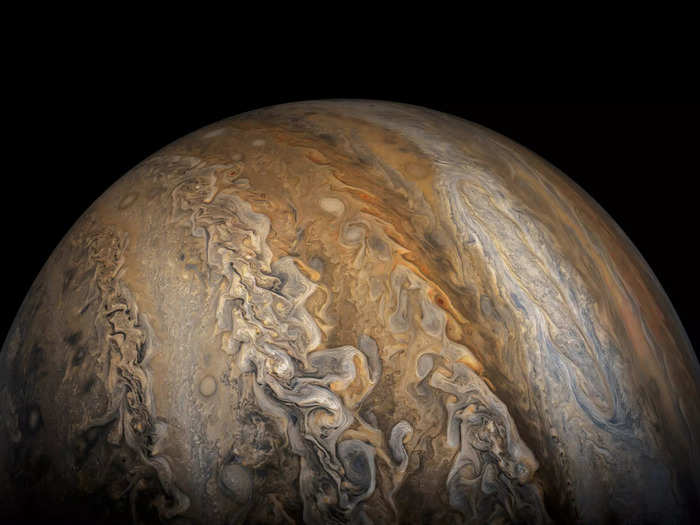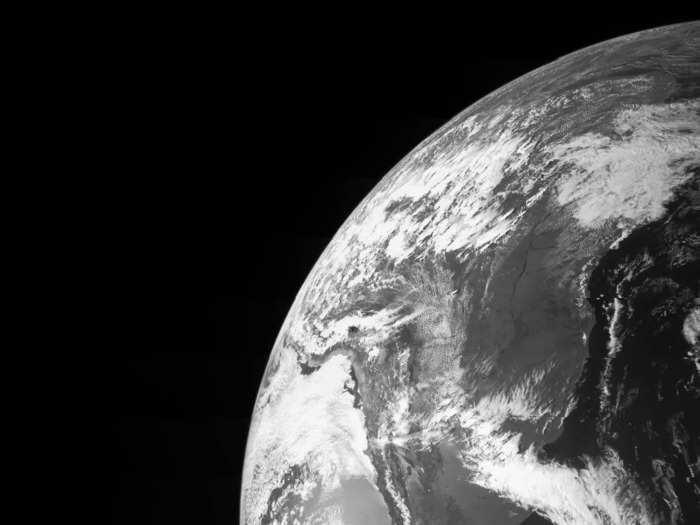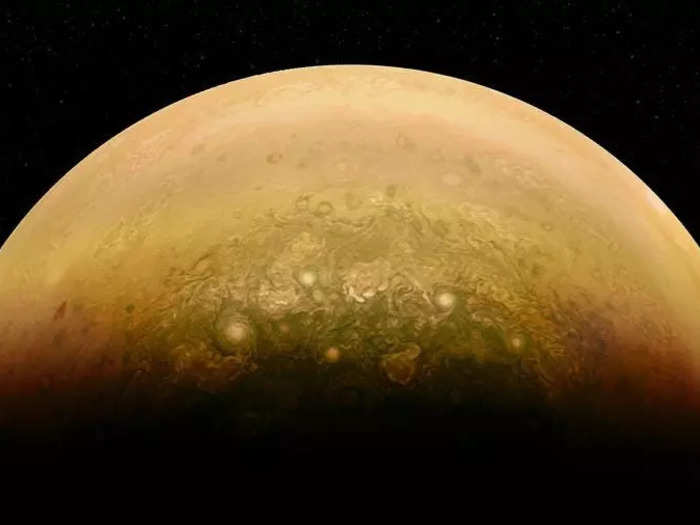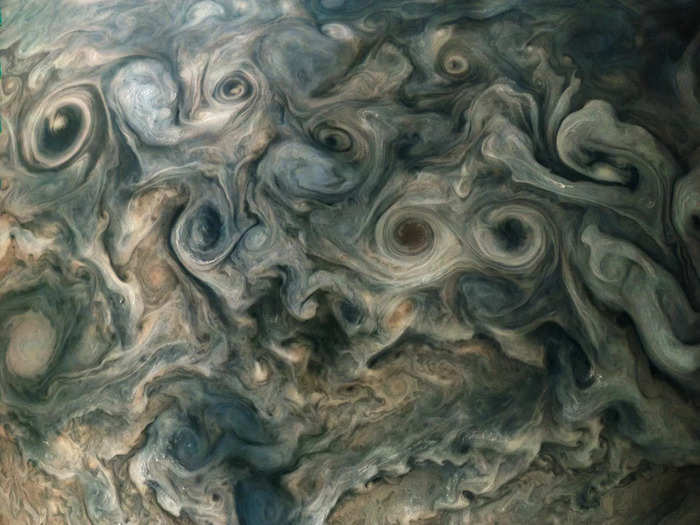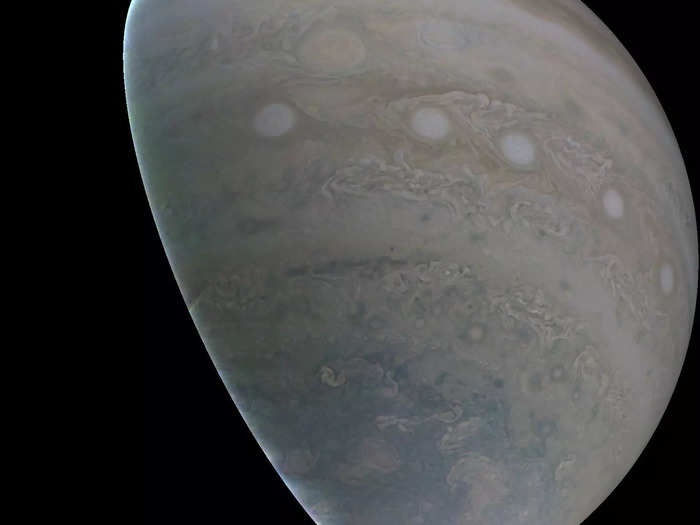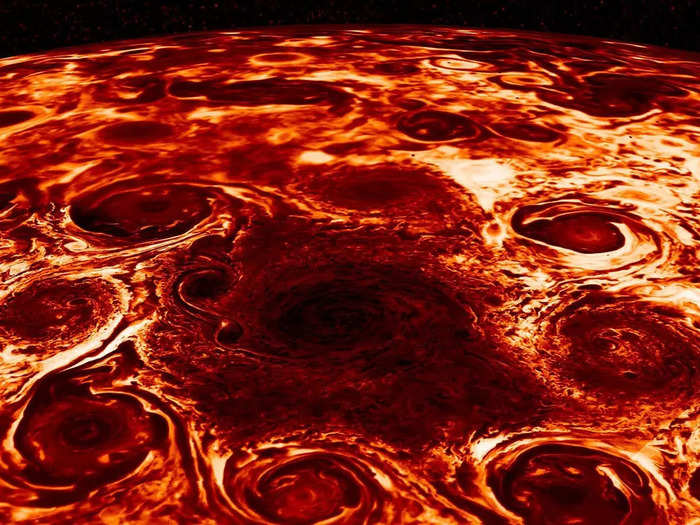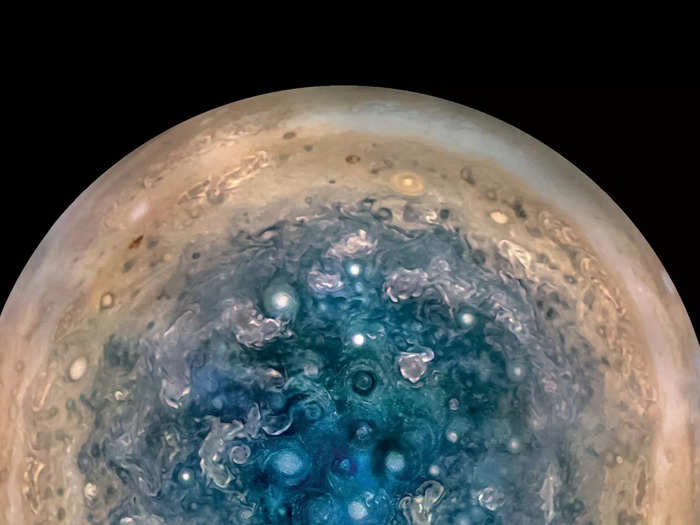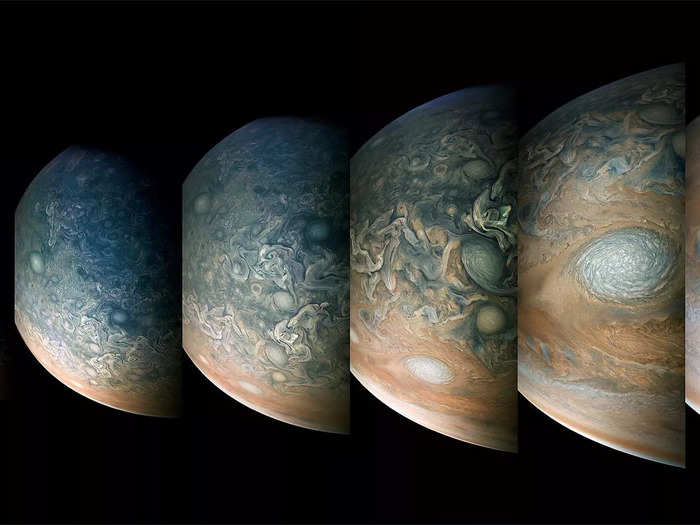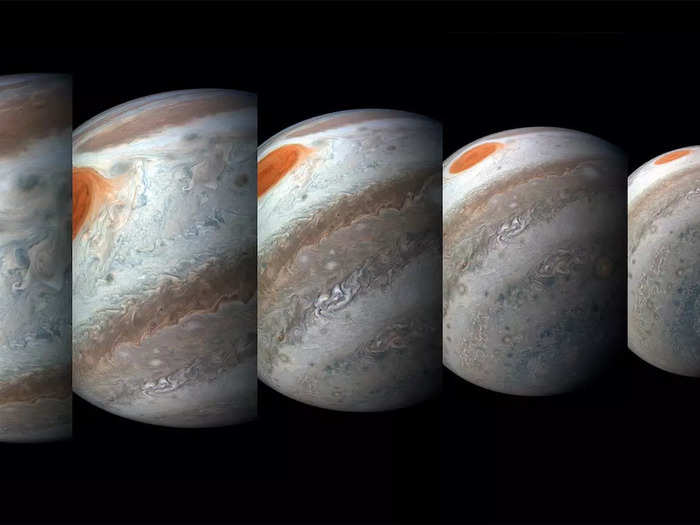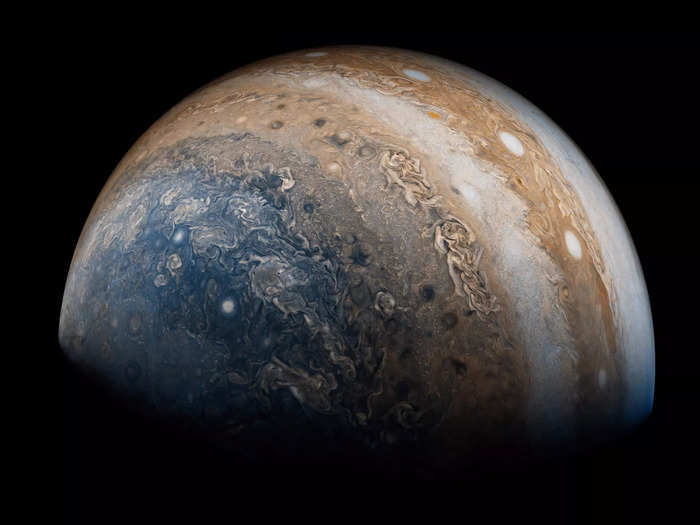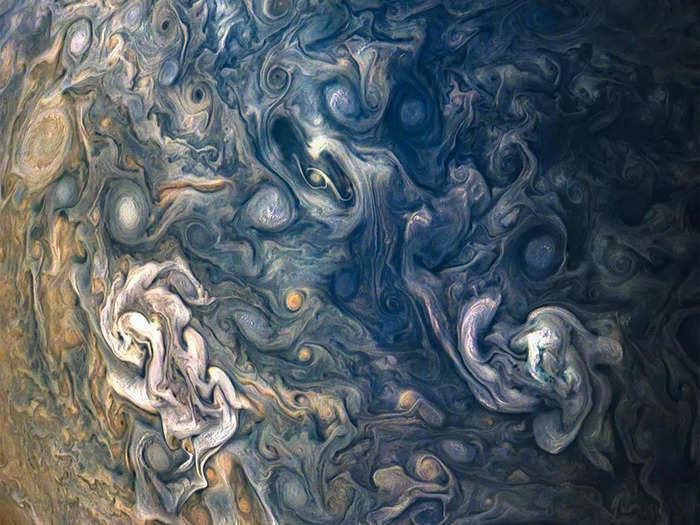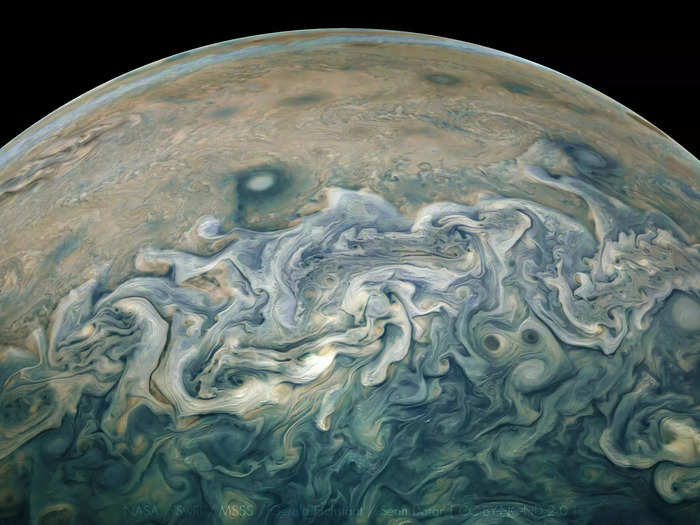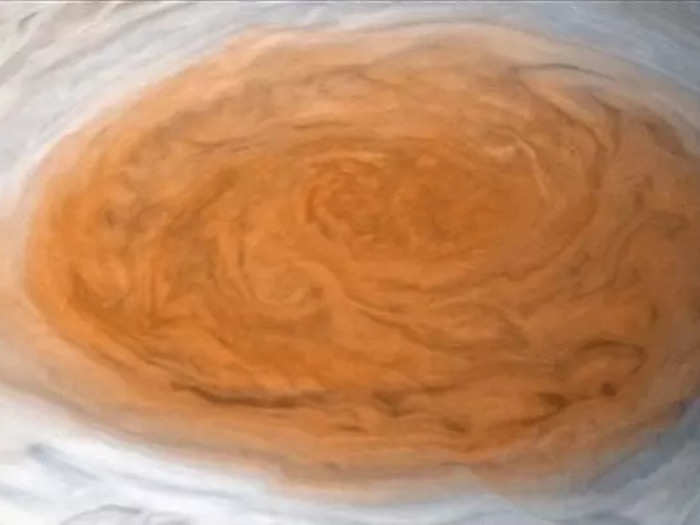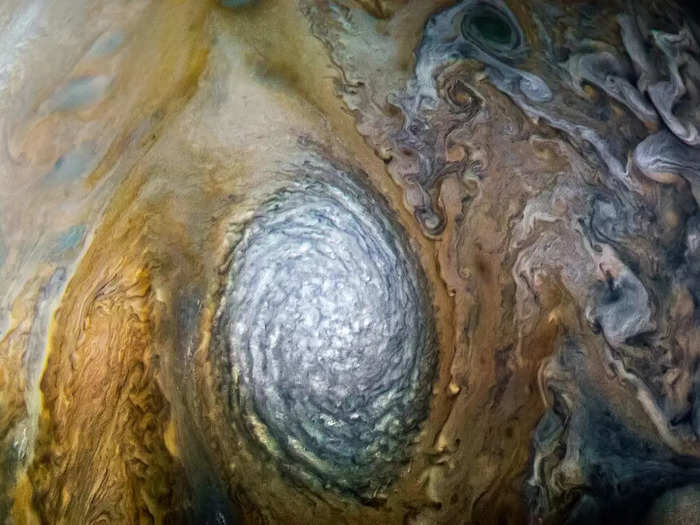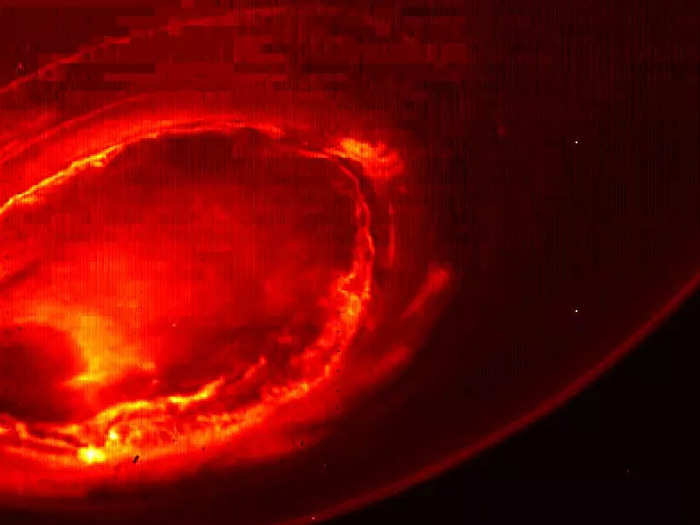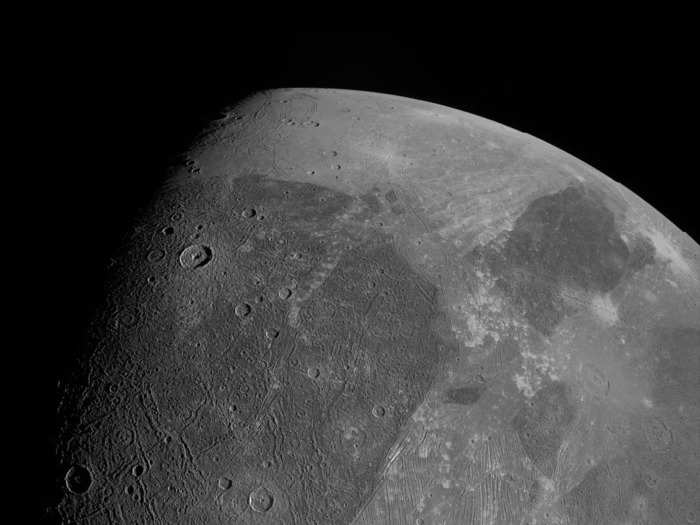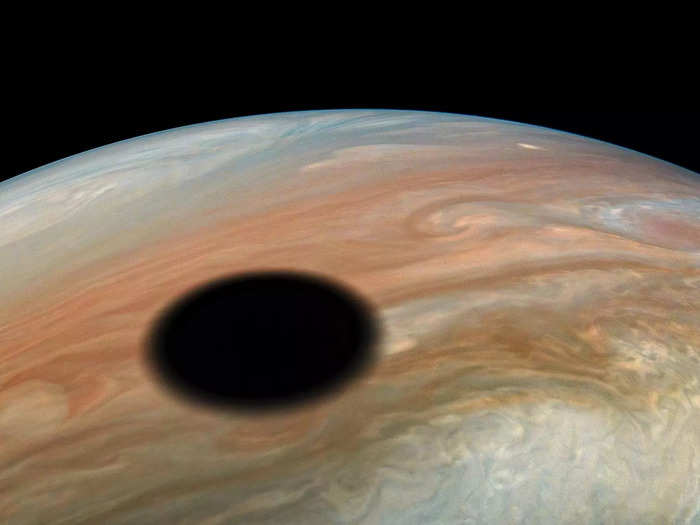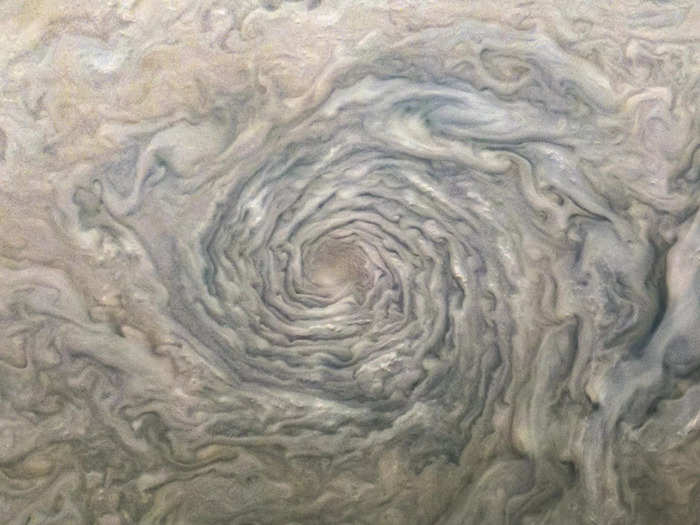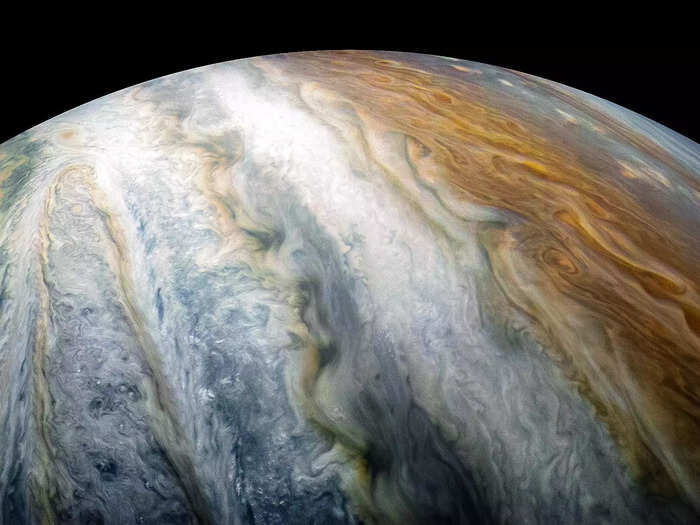10 years after NASA launched its Juno mission to Jupiter, these are its most stunning images of the gas giant
Morgan McFall-Johnsen
An illustration of NASA's Juno spacecraft flying above the clouds of Jupiter.NASA/JPL-Caltech/SwRI/MSSS/Kevin Gill
- NASA's Juno spacecraft has been orbiting Jupiter and taking jaw-dropping photos of the gas giant since 2016.
- Juno has flown past Jupiter's polar cyclones, anticyclones, auroras, the Great Red Spot, and enormous moons.
- Citizen scientists touch up Juno's raw images to highlight storms and clouds in stunning color. These pictures reveal the tumultuous bands of the planet's atmosphere, from its equator to each pole.
- The mission has also collected data that's revealing how Jupiter has evolved over time. That history is critical to understanding the gas giants that orbit other stars.
- Juno's data has revealed the workings of Jupiter's X-ray auroras, the depth of its Great Red Spot, and the immense power of its magnetic field.
READ MORE ARTICLES ON
Popular Right Now
Popular Keywords
Advertisement

